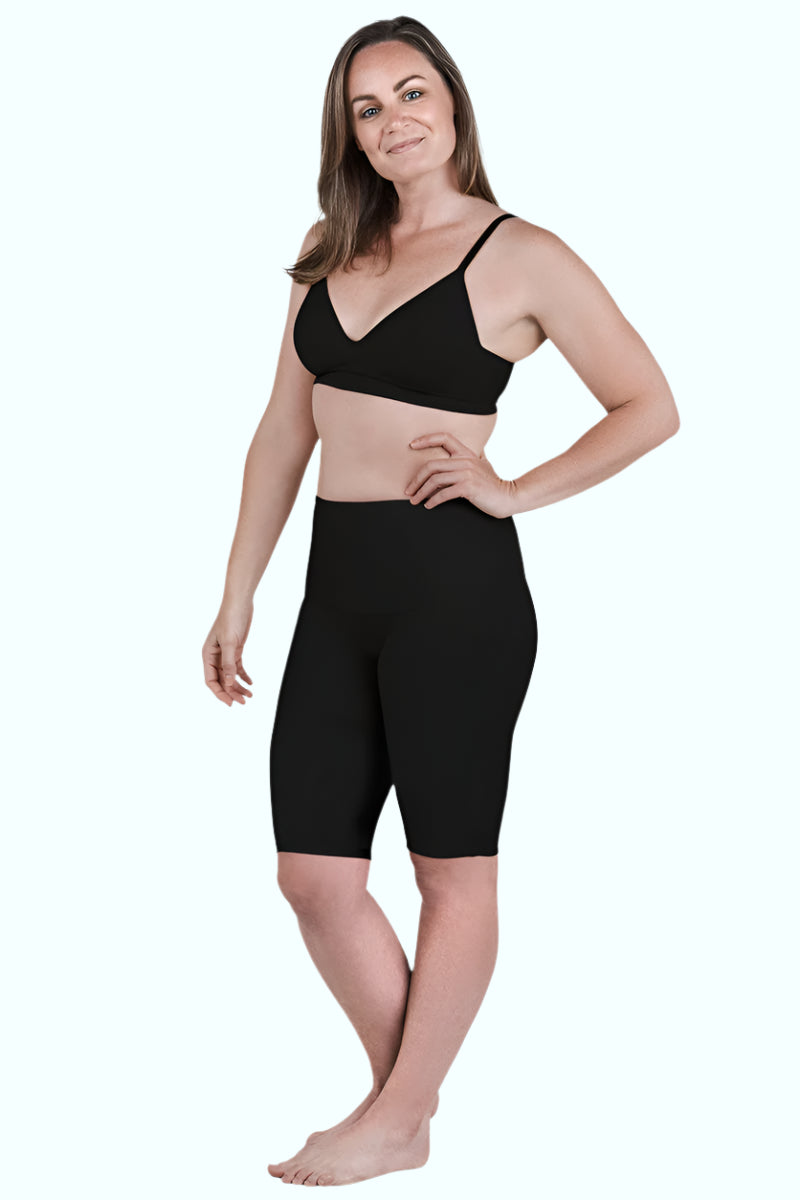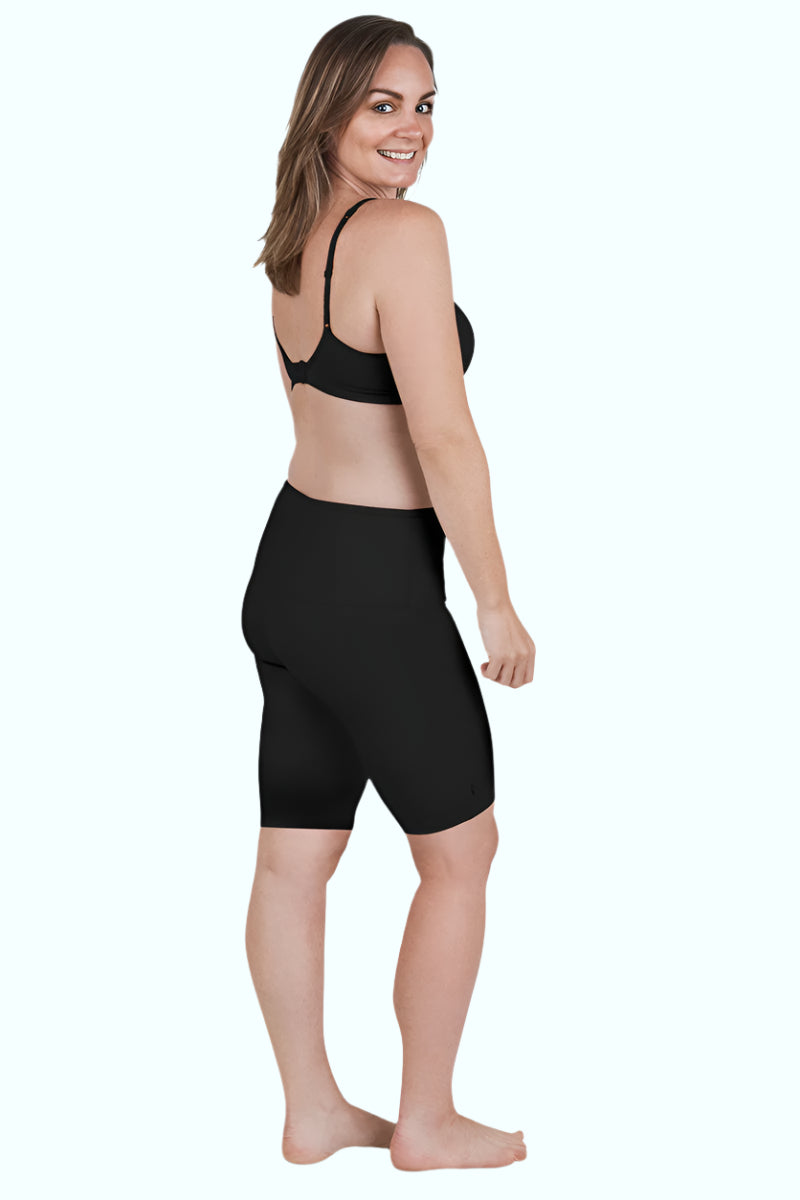Recovering from a caesarean section (C-section) is unlike recovering from an uncomplicated vaginal birth. A C-section is major abdominal surgery, which means it involves cutting through 7 layers with a longer healing time. According to Harvard Health Publishing, “Because the abdominal muscles and uterus are cut during a C-section, it takes longer to heal and regain core strength compared with a vaginal delivery.”
While it may feel daunting to begin exercising again, guided movement can be a powerful tool for recovery, if done at the right time and in the right way. In this guide, we’ll walk you through when it’s safe to start an exercise after a C-section, what types of movement are appropriate at each stage of recovery, and how to rebuild your strength gently and effectively.
When to Start Exercise After a C-Section
Before beginning any exercise, always get clearance from your healthcare provider. Recovery timelines vary from person to person, and there’s no pressure to follow a specific schedule. As the American College of Obstetricians and Gynecologists (ACOG) reminds us:
“Postpartum care should be an ongoing process, rather than a single encounter,” and women should receive individualised guidance for resuming physical activity.”
Our C-Section Recovery: A Week-by-Week Guide breaks down what to expect each week after surgery, offering gentle encouragement and practical advice.
During this period of rest and gentle reintroduction to movement, wearing your SRC C-Section Recovery Shorts or SRC C-Section Recovery Leggings can offer vital core stability, protect your incision area, and support weakened abdominal muscles. Many women find that they feel more secure and comfortable getting up, walking, or caring for their baby when wearing a properly designed recovery garment.
Not ready to resume exercise? Look out for:
-
Pain around the incision site
-
Heavy bleeding
-
Dizziness or faintness
-
Pelvic heaviness or pressure
-
Leaking during movement
Benefits of Post-C-Section Exercise
Exercise after a C-section can do more than just tone your muscles. It can improve your recovery experience on many levels:
-
Physically, it boosts circulation, helps reduce swelling, and strengthens weakened muscles.
-
Mentally and emotionally, it can reduce anxiety and depression. As ACOG states: “Physical activity has been shown to improve mood and overall well-being in postpartum women.”
-
Long-term, regular movement supports pelvic health, helps prevent back pain, and may lower the risk of prolapse. The 2019 Canadian Guideline for Physical Activity throughout Pregnancy adds that: “Physical activity is a safe and effective strategy to manage many common pregnancy-related symptoms, both during and after pregnancy.” It can also reduce recovery-related complications and improve quality of life.
Safe Post-C-Section Exercises by Stage
Always check with your doctor before starting new exercises. As Artal and O'Toole explain in their guidelines: “The return to physical activity should be gradual and individualised based on the woman’s physical and emotional readiness.”
0–6 Weeks Postpartum: Rest and Gentle Movement
This is a time for restorative healing, but a little movement can help. Here’s what you can do:
-
Slow walking: Encourages circulation, reduces blood clot risk, supports bowel function, and promotes healing. Harvard Health Publishing recommends that women “start slowly with walking and gentle movements and avoid abdominal exercises until cleared by a doctor.”
What Exercises to Avoid:
-
Lifting anything heavier than your baby
-
High-impact movement
-
Abdominal exercises like sit-ups or crunches
-
Driving or pushing a pram too soon
6–12 Weeks Postpartum: Light Exercises (With Doctor's Approval)
With clearance, you can begin gentle exercises that re-engage your core and pelvic floor, such as:
-
Pelvic tilts
-
Kegels
-
Gentle stretching (especially hip flexors, hamstrings, and shoulders)
-
Breathing exercises for core activation
According to the NHS, “Gentle activity such as pelvic floor exercises and short walks can help your recovery.”
3–6 Months Postpartum: Moderate Exercises
By now, many women can begin low-impact cardio and light strength work if healing has progressed well.
Examples:
-
Bodyweight squats and bridges
-
Wall push-ups
-
Low-impact aerobic classes
-
Light resistance training (resistance bands or 1–2kg weights)
Progress slowly. If you experience discomfort, leaking, or doming in the abdomen, scale back on your exercises and rest. These signs can indicate that your core and pelvic floor aren’t yet ready for the intensity of movement.

6 Months and Beyond: Return to Full Activity (If Cleared)
If cleared by your doctor and/or pelvic floor physiotherapist, this is the time you may resume more vigorous activities.
Examples:
-
Running or jogging
-
HIIT (high-intensity interval training)
-
Pilates and yoga (including core-focused classes)
-
Weight training
The key is building up slowly and watching for warning signs. “There is no universal timeline,” notes ACOG, “so each woman should be assessed individually.”

Core and Pelvic Floor Recovery: Special Considerations
Pregnancy and C-section delivery place enormous strain on your core and pelvic floor muscles. Rebuilding this foundation is key to avoiding complications like incontinence or prolapse later on.
See our article Pelvic Health for Life: It’s Never Too Late to Start Caring for Your Pelvic Floor for more expert tips, practical exercises, and guidance on how to strengthen and protect your pelvic floor at any age or stage of life.
Safe pelvic floor/core exercises include:
-
Kegels (start with short holds and gradually increase)
-
Transverse abdominal breathing
-
Pelvic tilts and bridges
-
Heel slides and modified dead bugs
According to Bo & Frawley, “Women want practical, evidence-based guidance on how to exercise the pelvic floor safely, especially after birth.” And as Thompson et al. confirmed, “Pelvic floor muscle training significantly improves pelvic organ support and reduces symptoms of prolapse.”
If you have symptoms such as leaking, bulging, or heaviness, consult a pelvic floor physical therapist. As MacKinnon & Dawes note, “Physiotherapy plays a vital role in postnatal recovery and long-term pelvic floor health.”
Tips for a Successful Post-C-Section Fitness Journey
A successful post-C-section fitness journey involves patience, gradual progression, and listening to your body. Here are key tips to guide your recovery and rebuild strength safely:
-
Be patient. Healing takes time. Don’t compare yourself to others.
-
Listen to your body. Pain is a signal to stop or scale back.
-
Wear support garments. Wearing supportive garments like the SRC C-Section Recovery Shorts or SRC C-Section Recovery Leggings during this period can help reduce pain, support your abdominal muscles, and assist with mobility in those early weeks.

-
Stay hydrated and nourished. Support your recovery from the inside out.
-
Incorporate rest days. Recovery is just as important as movement.
-
Track your progress. Small wins are still wins.
-
Seek professional guidance. A postpartum-trained physio or fitness trainer can tailor exercises to your needs.
Exercise after a C-section can be empowering, healing, and restorative, but it must be approached with care. There’s no rush to “bounce back.” Your focus should be on safe healing, regaining strength, and protecting your pelvic floor for the long haul. With gradual progression, the right support, and professional guidance, your post-C-section fitness journey can be safe and fulfilling.

FAQs
1. What exercises are safe immediately after a C-section?
Gentle walking, deep breathing, and pelvic floor (Kegel) exercises are typically safe, but always check with your doctor before starting any movement postpartum.
2. Can exercising too soon after a C-section cause harm?
Yes. Exercising before your body is ready can lead to complications like wound reopening, pain, pelvic organ prolapse, or worsened diastasis recti.
3. Can I exercise when I have diastasis recti?
Yes, but avoid crunches, planks, and twisting movements early on. Focus on core rehab with pelvic floor-friendly moves. Consult a physiotherapist for a safe plan and read our blog on The Ultimate Mother’s Guide to Diastasis Recti Resources; Healing Abdominal Separation Postpartum.
4. How to reduce the postpartum belly after a C-section?
Start with gentle movement, focus on core engagement, and avoid crash diets. Consistency, nutrition, and pelvic floor/core work will gradually help reduce belly size.
5. How to tighten the core after a C-section?
Practice transverse abdominal breathing, pelvic tilts, heel slides, and progress to deeper core exercises. Wearing SRC C-Section Recovery garments can also support muscle reactivation.
6. What are the signs I should stop exercising and call my doctor?
Stop exercising and seek medical advice if you notice:
-
Sharp pain or increased incision tenderness
-
Heavy bleeding
-
Dizziness or shortness of breath
-
Pelvic pressure or bulging
-
Urinary or bowel leakage
References:
-
Harvard Health Publishing (2022). Exercising after a C-section.
https://www.health.harvard.edu/blog/exercising-after-a-c-section-202208012797 -
ACOG (2020). Physical Activity and Exercise During Pregnancy and the Postpartum Period.
https://www.acog.org/clinical/clinical-guidance/committee-opinion/articles/2020/04/physical-activity-and-exercise-during-pregnancy-and-the-postpartum-period -
Mottola, M.F., et al. (2018). 2019 Canadian Guideline for Physical Activity throughout Pregnancy.
https://bjsm.bmj.com/content/52/21/1339 -
Artal, R., & O'Toole, M. (2003). Guidelines for exercise during pregnancy and postpartum.
https://bjsm.bmj.com/content/37/1/6 -
NHS UK (2021). Your body after birth.
https://www.nhs.uk/conditions/baby/support-and-services/your-body-after-birth/ -
SRC Health (2023). C-Section Recovery: A Week-by-Week Guide.
https://www.srchealth.com/blogs/news/c-section-recovery-week-by-week-guide -
Bø, K., & Frawley, H. (2010). Exercise and the pelvic floor.
https://doi.org/10.1007/s00192-010-1174-3 -
Thompson, J.A., et al. (2015). Impact of pelvic floor muscle training on prolapse.
https://doi.org/10.1097/AOG.0000000000000850 -
MacKinnon, M., & Dawes, G. (2021). The role of physiotherapy in the postnatal period. https://doi.org/10.1111/tog.12788













